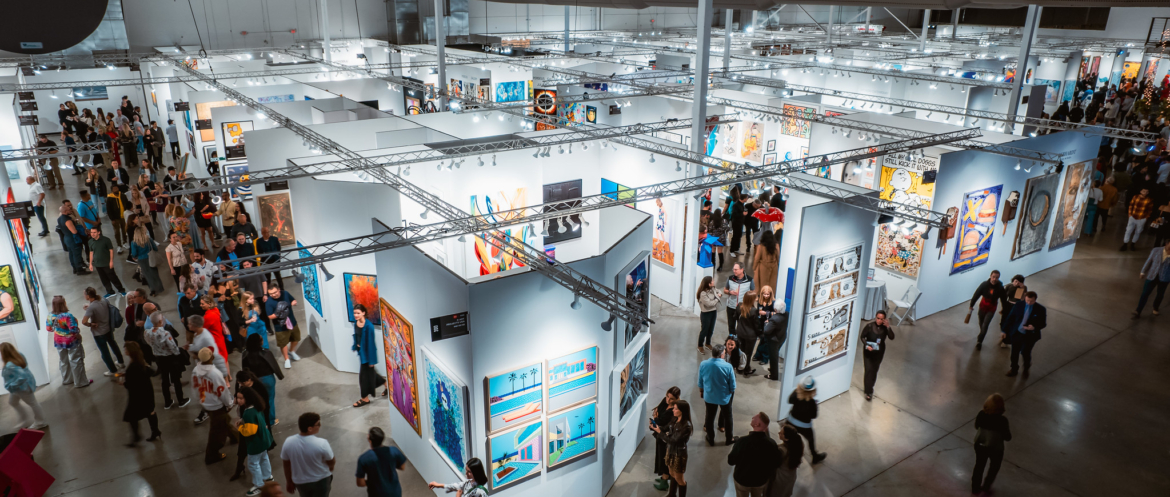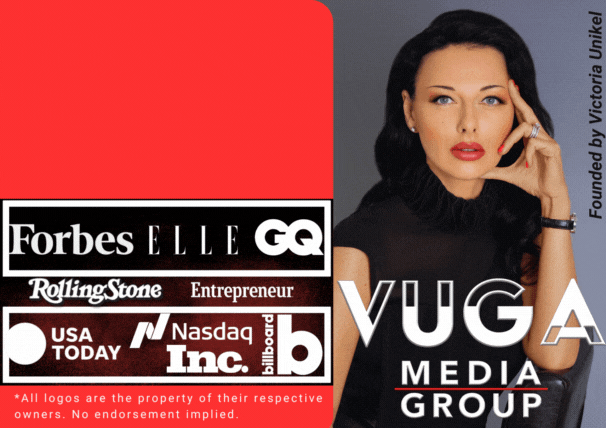The art market and collectors don’t owe anyone a living. That’s not a bug—it’s a feature.
Last week, a Hyperallergic opinion piece titled “Everything Is Not Fine in the Art World” made the rounds, lamenting the disconnect between Christie’s $690 million November double-header, actions of collectors, and the economic struggles of working artists. The author, watching the auction coverage, saw a “magic trick” designed to obscure what artists “really need.” The gavel falls, the headlines celebrate, and somewhere an artist can’t afford healthcare.
It’s a compelling narrative. It’s also fundamentally confused about what markets do and who they serve.

Let’s start with what actually happened in those sales rooms. When a $236.4 million Klimt changes hands, it isn’t a “coded message within a small network of powerful actors,” as the piece suggests with a whiff of conspiracy. It’s a transaction. One party has money and wants a painting. Another party has a painting and wants money. The auction house facilitates the exchange and takes a commission. This is not sinister. This is commerce, the same mechanism that allows artists to buy canvas and collectors to acquire work in the first place.
The Hyperallergic piece treats the $2.2 billion in sales last week as something shameful, a spectacle that “hides a body in crisis.” But consider the alternative. A world in which no one pays $236 million for a Klimt is also a world in which no one pays $236,000, or $23,600, or $2,360. The infrastructure that moves nine-figure masterworks is the same infrastructure that moves emerging artists out of obscurity. Auction houses, galleries, art fairs, advisors—these aren’t parasites on the body of art. They’re the circulatory system.

The Collector Owes You Nothing
Here is the uncomfortable truth that the art world’s romantic faction refuses to accept: collectors do not owe artists their respect, their patience, their long-term commitment, or their understanding. Collectors owe artists exactly what they pay for—the work. That’s it. The transaction is complete.
When the Hyperallergic author warns artists to watch for “red flags”—collectors who rush toward acquisition, who ask about scarcity, who want to know about museum placements—what they’re actually describing is due diligence. A collector asking how many works exist in a series isn’t “thinking about your future auction results rather than your future growth.” They’re trying to understand what they’re buying. This is rational behavior. It’s what any serious buyer does before committing capital to any asset class.
And yes, art is an asset class. This has been true since the Medicis, since the Dutch Golden Age, since J.P. Morgan hung Rembrandts in his library. The notion that art should somehow exist outside economic logic—that collectors should acquire work as an act of patronage rather than investment—is historically illiterate. The great patrons of history were also great speculators. They bought what they believed would endure, and their belief created the canon.
The Gallerist’s Impossible Position
The Hyperallergic piece acknowledges, almost parenthetically, that galleries “are also navigating their own pressures, their own precarity.” This deserves more than a passing mention. Galleries operate on margins that would horrify any traditional business analyst. They front costs for production, shipping, installation, and marketing. They cultivate collectors over years, sometimes decades. They carry artists through fallow periods. And they take a 50 percent commission that sounds enormous until you realize it barely covers overhead.
Art Basel Miami Beach booth fees start at roughly $35,000 for the smallest spaces and climb past $100,000 for prime positions—before shipping, installation, travel, housing, and entertainment costs. A gallery betting the year on a single fair isn’t performing capitalism’s rituals. They’re surviving capitalism’s reality. When critics bemoan the “spectacle” of art fairs, they rarely acknowledge that gallerists hate them too. They participate because collectors show up. They participate because it works.
The same logic applies to auction houses. Christie’s and Sotheby’s aren’t manufacturing belief out of thin air. They’re aggregating demand that already exists and channeling it toward supply. The “choreography” that Sarah Thornton described—the scripts, the gestures, the artificial suspense—is just salesmanship. Every industry has its theater. Real estate agents stage homes. Car dealers wax floors. Fashion houses show collections on runways rather than in warehouses. The auction paddle is no more sinister than the model’s walk.
Supply, Demand, and the Uncomfortable Math
According to data from Artnet’s own Intelligence Report, fine-art auction sales during the first half of 2025 totaled $4.72 billion, down 8.8 percent year over year and 40.9 percent from 2022’s peak. The art market is contracting. Belgian collector and art market commentator Alain Servais put it bluntly: “There are too many advisors, too many galleries, too many artists, too many fairs. Everything will need to downsize.”
This is not a crisis. This is a correction. The art world expanded dramatically during the post-2008 bull run, fueled by low interest rates and the search for alternative assets. Now interest rates have risen, capital is more expensive, and the marginal buyer has left the room. What remains is the core market—serious collectors making serious commitments to work they believe in.
For artists, this is actually clarifying. A smaller, more disciplined art market forces harder questions. Is your work good enough? Is there genuine demand, or were you riding a wave? The galleries that survive will be the ones that chose their rosters wisely. The collectors who remain will be the ones building collections rather than flipping inventory. The artists who endure will be the ones whose work creates real value—aesthetic, emotional, intellectual—rather than relying on manufactured hype.
The Resale Royalty Canard
The Hyperallergic piece notes that “in the United States, living artists receive none of that resale money.” This is true. It’s also irrelevant to how markets function.
When you sell a house, you don’t receive a cut of future sales. When you sell a car, same deal. When a company goes public and the founder sells shares, they don’t receive a royalty every time those shares change hands on the secondary market. The art world’s fixation on resale royalties reflects a category error—treating art as a service contract rather than a sale of goods.
The Artist Resale Right, which exists in the European Union and some other jurisdictions, has not transformed artist economics. It’s a modest percentage that generates modest income for a small number of high-value artists. For the emerging artist worried about healthcare, it’s meaningless. The Klimt that sold for $236 million was made by a man who died in 1918.
What actually helps artists? A healthy primary market where galleries can sell work at sustainable prices. A collector base that buys because they love art, not just because they expect appreciation. An infrastructure of fairs, auctions, and publications that keeps art visible to potential buyers. In other words, exactly the system the Hyperallergic piece condemns.
The Performance Goes Both Ways
The piece accuses the art market of forcing artists into “performance”—of success, scarcity, charisma, expertise. But every professional field requires performance. Lawyers perform competence in courtrooms. Doctors perform confidence in consultations. Professors perform expertise in lecture halls. The idea that artists alone should be exempt from presenting themselves effectively is not a defense of artistic purity. It’s a demand for special treatment.
And let’s be honest about who benefits from that demand. The artists calling for the market to fundamentally restructure itself are rarely the artists at the bottom of the ladder. They’re mid-career figures with gallery representation, museum shows, and platforms like Hyperallergic to publish their complaints. The truly struggling artist—the one working a day job, sharing a studio in a far-flung neighborhood, hoping for a shot—doesn’t want the art market to collapse. They want in.
The Art Market Comes From You
The Hyperallergic piece ends with a flourish: “Your value does not come from the market. The market comes from you.”
This is exactly backwards.
Value is not intrinsic. It does not reside in the object, waiting to be recognized. Value is created through exchange—through a buyer’s willingness to pay and a seller’s willingness to accept. The artist who refuses to engage with the art market isn’t preserving their integrity. They’re opting out of the conversation entirely.
The collectors bidding in those November sales aren’t philistines desecrating sacred objects. They’re believers. They believe strongly enough to commit real money—sometimes life-changing sums—to works of art. They’re voting with their wallets, and their votes are what allow artists to make more work, galleries to stay open, museums to acquire collections, and the entire ecosystem to persist.
Everything is fine in the art world. Not perfect, not fair in some cosmic sense, but functioning as markets function—rewarding what buyers want, punishing what they don’t, and creating space for those who can navigate the terrain. The gavel falls, the room applauds, and somewhere an artist’s work has just become more valuable. That’s not a tragedy. That’s the system working.



